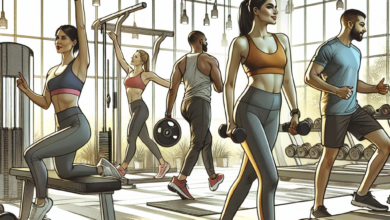How to Fix Muscle Imbalances: Causes and Treatments

Whether you’re stepping into the gym for the first time or you’re a gym veteran, you must have noticed your left side doesn’t match your right. Even better put, you could be struggling to get your left arm’s bicep to bulge out, while you’ve got a perfect bulge on your right, or vice-versa.
The truth is, most of us aren’t perfectly symmetrical, and somehow, we have to live with it.
Nevertheless, there’s always a way to fix natural asymmetry, and to be specific, muscle imbalances.
Muscle imbalances may be as a result of over-focusing on some body areas more than others. Therefore, changing your workout rhythm could help you overcome this.
But before we get down to the solution, let’s first understand what muscle imbalances are.
What’s a Muscle Imbalance?
Simply put, a muscle imbalance is when a set of muscles on one side of the body is stronger, tighter, heavier, or weaker than a set on the other side.
Muscle imbalances occur for all kinds of reasons. In most cases, it happens when one relies on the dominant side of their body for mild or heavy workout activities.
For instance, one may develop muscle imbalances because they rely on the dominant side of their body to lift heavy weights or perform intensive workouts. Since more effort is over-focused on one side, they end up developing stronger and heavier muscles on one side of the body than the other.
Other causes of a muscle imbalance include maintaining a poor posture, repetitive motion, and an uneven workout program.
While natural body asymmetry is normal, a muscle imbalance should be taken seriously. It could result in more serious problems, such as limited mobility, joint pains, increased risk of injury to the spinal cord, muscles, joints, and ligaments, and unbalanced appearance.
Therefore, it’s important to identify a muscle imbalance and make efforts to fix it immediately.

Types Of Muscle Imbalances
Muscle imbalances may occur in two ways: joints or on either side of the body. As a result, we have two types of muscle imbalances, namely:
- Joint Muscular Imbalance – The muscles around the joints work together with normal opposing force to engage the bones while keeping the joint at the center for optimum mobility. As such, there should be a striking balance between the antagonist and agonist muscles. In case either of these muscles become stronger, heavier, or weaker than the other, you may end up with a muscle imbalance and consequently limited mobility.
- Body Muscular Imbalance – For natural body symmetry, the muscles on one side of the body should match the other side in terms of size, weight, and strength. Nevertheless, since most of our body features aren’t symmetrical, a group of muscles on one side might become heavier, stronger, or tighter than the other. As a result, you get a muscle imbalance.
Understanding Muscle Pairs
Muscles work in pairs to facilitate body movements. When one muscle of the pair contracts to move a joint, the other relaxes to return it to its original position. Muscles that function in this manner are known as antagonistic pairs.
The contracting muscle is known as the agonist, whereas the one that relaxes is called the antagonist.
A good example is when you’re performing a bicep curl. Since the biceps contract to produce a movement, they’re the agonist, whereas the triceps are the antagonist, as they relax to allow the movement.
If either the bicep or tricep is stronger or heavier than its counterpart, you may have a muscle imbalance and consequently limited motion.
Signs Of Muscle Imbalance
Unless you’re a workout enthusiast, it might be difficult to tell whether you have a muscle imbalance or not. Nevertheless, watch out for these signs if you’re suspecting you have a muscle imbalance.
- Pain on either side of the body – Due to a muscle imbalance, the weaker muscles tend to recruit other muscles to achieve a balance. This can result in pain or injury since your body is relying on muscles that shouldn’t be engaged in the workout.
- Relying on one side for heavy workouts – If you can do more reps of an exercise on one side than the other, that’s a sign of a muscle imbalance.
- Weakness on either side of the body – This can also include either side of the body feeling weaker than the other.

How To Fix Muscle Imbalances
The best way to fix muscle imbalances is by focusing on one-sided exercises. That is, including unilateral exercises in all your workouts.
As soon as you identify a muscle imbalance, you should start working on your weaker side to strike a balance between the two sides.
When you start with the weak side, you’ll be able to notice the gap between the two sides. In this way, you can notice your milestones along the way. For instance, if you’re right-handed, try to perform a few bicep curls with your left arm first.
Be sure to use the right weights for your weaker side. Remember, you’re beginning your journey to recovery, and so, straining could do more damage. Go for weights that you feel comfortable lifting on this side even though they’re way lighter for the strong side.
This also applies to the number of exercise reps one performs on either side. If the weaker side can’t go beyond five reps, don’t push it to ten reps that the strong side is comfortable with. Give it time to catch up. You can go increasing the reps as the days go by until you even out things.
Muscles work in pairs, and for proper movements, there should be a balance between each muscle pair. However, due to uneven workouts or poor posture, muscles on one side may become stronger or heavier than the other, leading to muscle imbalance. By changing our workout habits, we can even out things on both sides.



